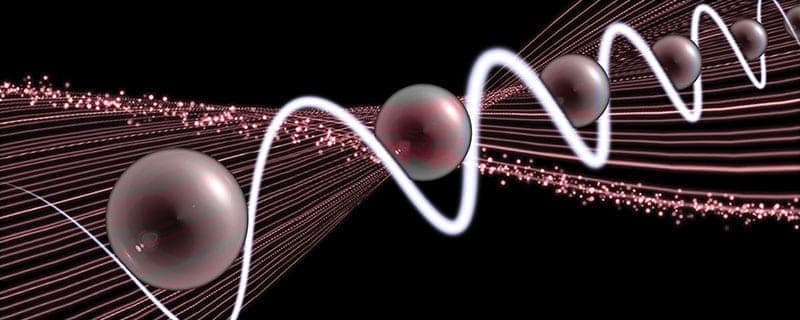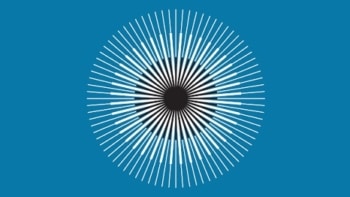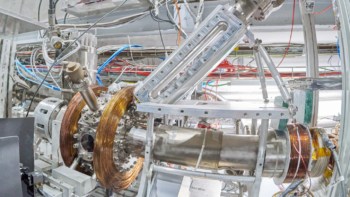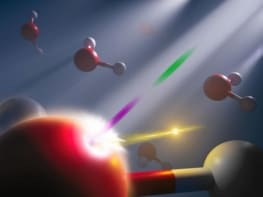
Giant diatomic molecules the size of small bacteria have been formed from pairs of Rydberg atoms, and then studied using an optical microscope. Physicists in Germany, led by Immanuel Bloch and Christian Gross at the Max-Planck Institute for Quantum Optics, achieved the result by manipulating Rydberg atoms trapped within an optical lattice. Their work could lead to new techniques for determining molecular properties.
While some basic properties of very simple molecules can be calculated using quantum theory, a complete understanding of common molecules such as water has eluded scientists. Part of the problem is that most molecules are far too small to be imaged directly using light.
One way forward is to create molecules from huge Rydberg atoms – which have outer-shell electrons in highly excited states. Whereas the diameters of most atoms are on scales of nanometres, the outer electron of a Rydberg atom can be microns away from the atomic nucleus. Rydberg atoms therefore have very large electric dipole moments. This allows the atoms to bind together to form molecules with extremely long bond lengths – which means that these Rydberg molecules can be imaged directly using light.
Quantum simulators
The idea is to use these giant molecules as analogues of much smaller molecules. These analogues could be used as quantum simulators of molecular properties.
The experiment involves loading a square 2D optical lattice with ultracold rubidium atoms. The atoms begin in their lowest energy (ground state) and are separated by a minimum distance of 0.54 micron. Ultraviolet laser light is fired at the atoms, which creates Rydberg atoms that can then bind together to form diatomic molecules. The molecules are then ejected from the lattice, leaving empty lattice spaces that can be observed using a microscope (see figure).
Microscope images show that Rydberg molecules are formed between adjacent atoms on diagonals of the square lattice. This means that the bond lengths of the molecules are about 0.7 micron, which is about the same size as a small bacterium.

The rise of Rydberg physics
By adjusting the polarization of the UV laser, the team can change the orientation of the molecules in the lattice. Furthermore, the relative orientation of the laser polarization and the molecule is to be dependent upon the vibrational state of the molecule. Indeed, the team can put the molecules into more 50 different vibrational states by fine-tuning the wavelength of the UV laser.
As well as being a significant step forward in the field of molecular imaging, the team says that its experiment sets the scene for rigorous new tests of the conditions under which Rydberg atoms can interact with each other. The techniques could also be used to develop simulations of quantum many-body systems using ultracold atoms.
The research is described in Science.



